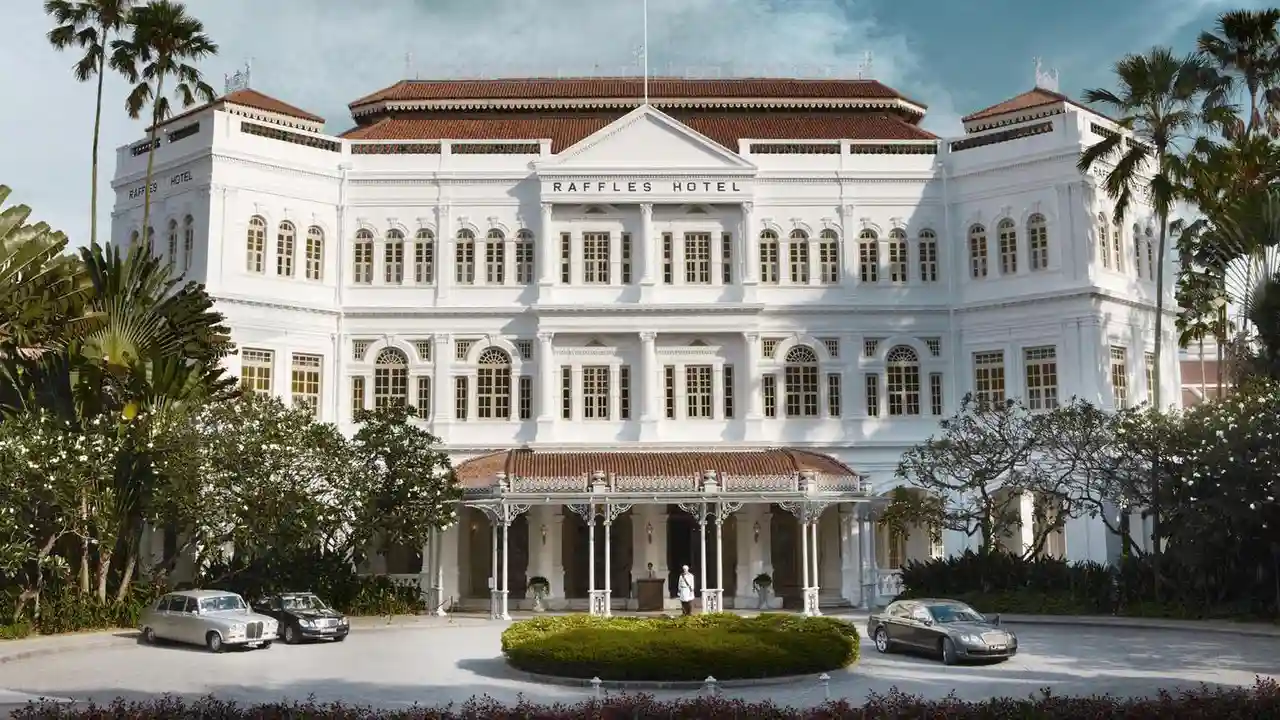The History of Historic Hotels A Journey Through Time
Discover the most charming and historic hotels and resorts around the world. Plan your unforgettable stay.

The Origins of Historic Hotels A Timeline
Alright, let's dive into the fascinating world of historic hotels! These aren't your run-of-the-mill chain hotels; they're living, breathing museums, each with a story etched into its very walls. We're talking about places that have witnessed history unfold, hosted royalty and celebrities, and preserved architectural wonders. Think of it as stepping back in time, but with modern amenities (because, let's be honest, who wants to forgo Wi-Fi?).
The concept of lodging travelers dates back to ancient times, with caravanserais along the Silk Road and Roman inns offering respite to weary travelers. However, the modern idea of a 'hotel' as we know it began to take shape in the 18th and 19th centuries, driven by increased travel and trade. These early hotels were often grand affairs, built to impress and cater to a wealthy clientele.
Here’s a quick timeline to get you oriented:
- Pre-18th Century: Inns and taverns were the primary options for travelers. Think basic accommodations, often shared rooms, and simple meals.
- 18th Century: The rise of the 'grand tour' fueled demand for more sophisticated accommodations, leading to the development of early hotels.
- 19th Century: The Industrial Revolution brought about a travel boom, with railways connecting cities and making travel more accessible. This led to the construction of iconic hotels like The Raffles in Singapore and The Savoy in London.
- Early 20th Century: The 'Golden Age' of travel saw hotels become even more luxurious, with elaborate dining rooms, ballrooms, and personalized service. Think Art Deco elegance and a focus on creating an unforgettable experience.
- Mid-20th Century to Present: While modern hotel chains emerged, many historic hotels have persevered, adapting to changing times while retaining their unique character and charm. They are now meticulously preserved and often offer unique historical tours and experiences.
Iconic Historic Hotels Examples and Their Stories
Let's take a look at a few iconic examples to illustrate the rich history and architectural diversity of these establishments:
- The Raffles Singapore: Founded in 1887, The Raffles is synonymous with colonial elegance and luxury. It's where the Singapore Sling was invented, and its Long Bar is a must-visit for any history buff. The architecture is stunning, a blend of colonial and Southeast Asian styles.
- The Ritz Paris: Opened in 1898, The Ritz Paris has hosted royalty, celebrities, and literary figures for over a century. Its opulent interiors, impeccable service, and prime location on the Place Vendôme make it a true icon of Parisian luxury.
- The Grand Hotel Europe, St. Petersburg: Dating back to 1875, this hotel is a masterpiece of Russian architecture. It's hosted countless dignitaries and artists, and its opulent interiors and historical significance make it a truly unforgettable experience.
- Ashford Castle, Ireland: Originally built in 1228, Ashford Castle has been transformed into a luxurious hotel while retaining its medieval charm. With its stunning location on the shores of Lough Corrib, it offers a unique blend of history, luxury, and natural beauty.
Architectural Styles in Historic Hotels A Visual Journey
One of the most appealing aspects of historic hotels is their diverse architectural styles. From grand Victorian facades to elegant Art Deco interiors, these buildings offer a visual feast for architecture enthusiasts. Here are a few common styles you'll encounter:
- Victorian: Characterized by ornate detailing, intricate moldings, and a sense of grandeur. Think high ceilings, elaborate chandeliers, and rich fabrics.
- Art Deco: Sleek, geometric, and glamorous. Art Deco hotels often feature bold colors, stylized ornamentation, and a focus on modern materials like chrome and glass.
- Colonial: Typically featuring wide verandas, white-washed walls, and a sense of airy elegance. Colonial-style hotels are often found in tropical locations and evoke a sense of old-world charm.
- Renaissance Revival: Inspired by the architecture of the Italian Renaissance, these hotels often feature symmetrical facades, arched windows, and classical ornamentation.
- Gothic Revival: With pointed arches, soaring ceilings, and a sense of drama, Gothic Revival hotels are often found in Europe and evoke a sense of medieval grandeur.
The Evolution of Hotel Amenities From Basic to Boutique
The amenities offered in historic hotels have evolved dramatically over time. Early hotels focused on providing basic necessities like food and shelter. As travel became more sophisticated, hotels began to offer more luxurious amenities to cater to the needs of discerning travelers. Today, historic hotels often blend modern comforts with historical charm, offering guests a unique and unforgettable experience.
- Early Hotels: Basic accommodations, simple meals, and limited services.
- 19th Century: The introduction of private bathrooms, electricity, and elevators.
- Early 20th Century: The addition of dining rooms, ballrooms, and personalized service.
- Modern Era: State-of-the-art technology, spa services, and curated experiences.
Preserving History The Challenges and Triumphs of Restoration
Maintaining and restoring historic hotels is a challenging but rewarding endeavor. These buildings often require extensive repairs and renovations to preserve their architectural integrity and ensure their long-term viability. Preservation efforts often involve working with historical societies, architects, and craftsmen to ensure that the original character of the building is maintained. Let's not forget the costs associated with these restorations! It's a labor of love and dedication to preserving our cultural heritage.
Product Recommendations Enhancing Your Historic Hotel Stay
To truly immerse yourself in the historic hotel experience, consider these product recommendations to enhance your stay:
- Antique Luggage: A vintage-inspired suitcase or travel bag can add a touch of old-world charm to your journey. Consider the is a great choice. It allows you to document your travels with a timeless aesthetic. Prices vary widely based on condition, but expect to pay between $1,500 and $3,000. Perfect for capturing architectural details of the hotel. Compared to a digital camera, it requires more skill and patience but offers a unique visual aesthetic.
- Period-Appropriate Attire: Embrace the hotel's historical era by packing clothing that reflects its style. A flapper dress for an Art Deco hotel or a tweed suit for a Victorian-era establishment. You can find various retailers selling reproduction vintage clothing online. Prices can range from $50 to $500 depending on the complexity and quality. This adds an extra layer of immersion to your experience. This might not be practical for everyday wear, but ideal for themed dinners or events at the hotel.
- Luxury Stationary Set: Write postcards or journal entries using a high-quality stationary set.
The Future of Historic Hotels Balancing Tradition and Modernity
The future of historic hotels lies in balancing tradition and modernity. While preserving their historical character is essential, these hotels also need to adapt to the changing needs and expectations of modern travelers. This may involve incorporating new technologies, offering sustainable practices, and creating unique experiences that appeal to a new generation of guests.
:max_bytes(150000):strip_icc()/277019-baked-pork-chops-with-cream-of-mushroom-soup-DDMFS-beauty-4x3-BG-7505-5762b731cf30447d9cbbbbbf387beafa.jpg)






